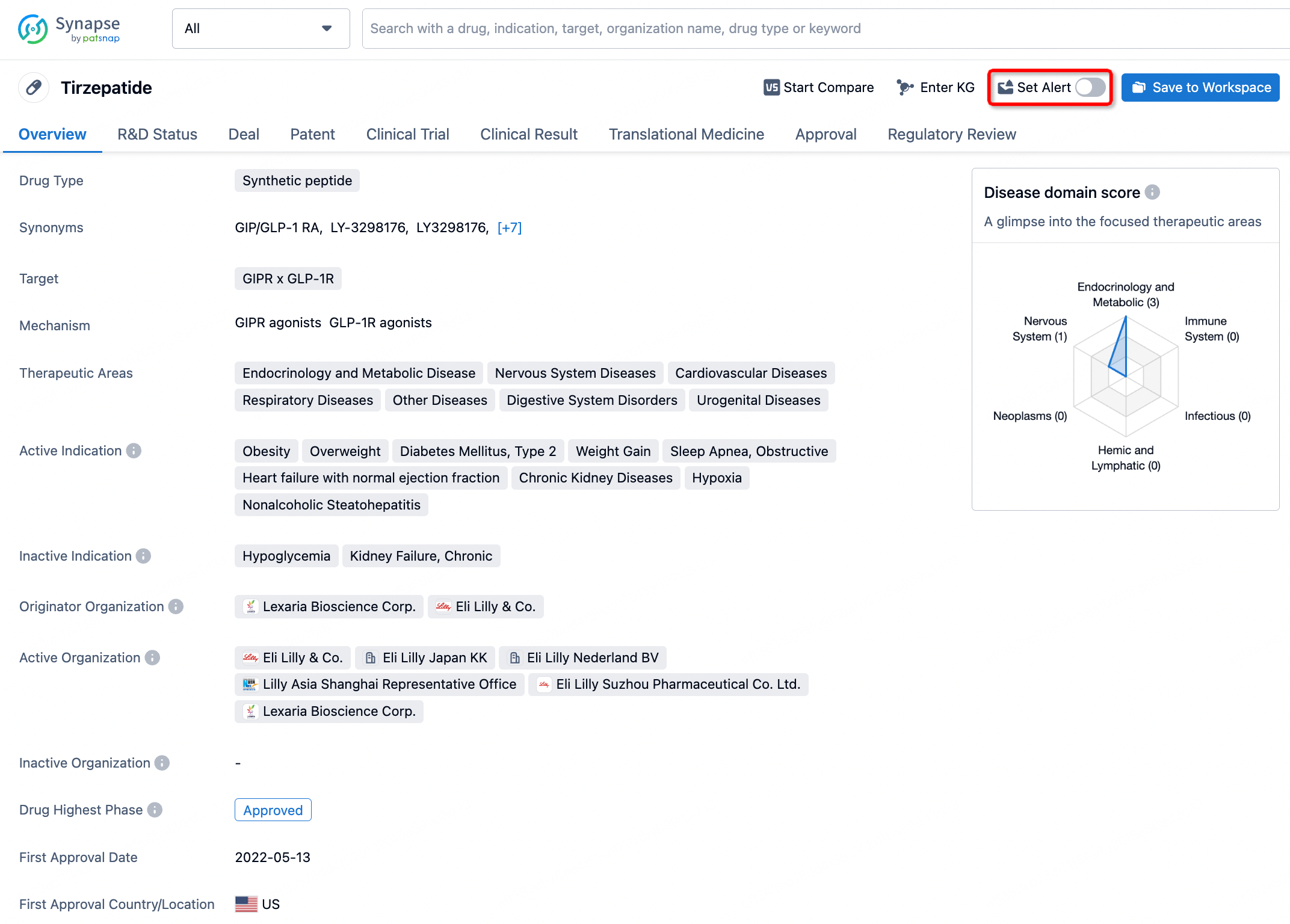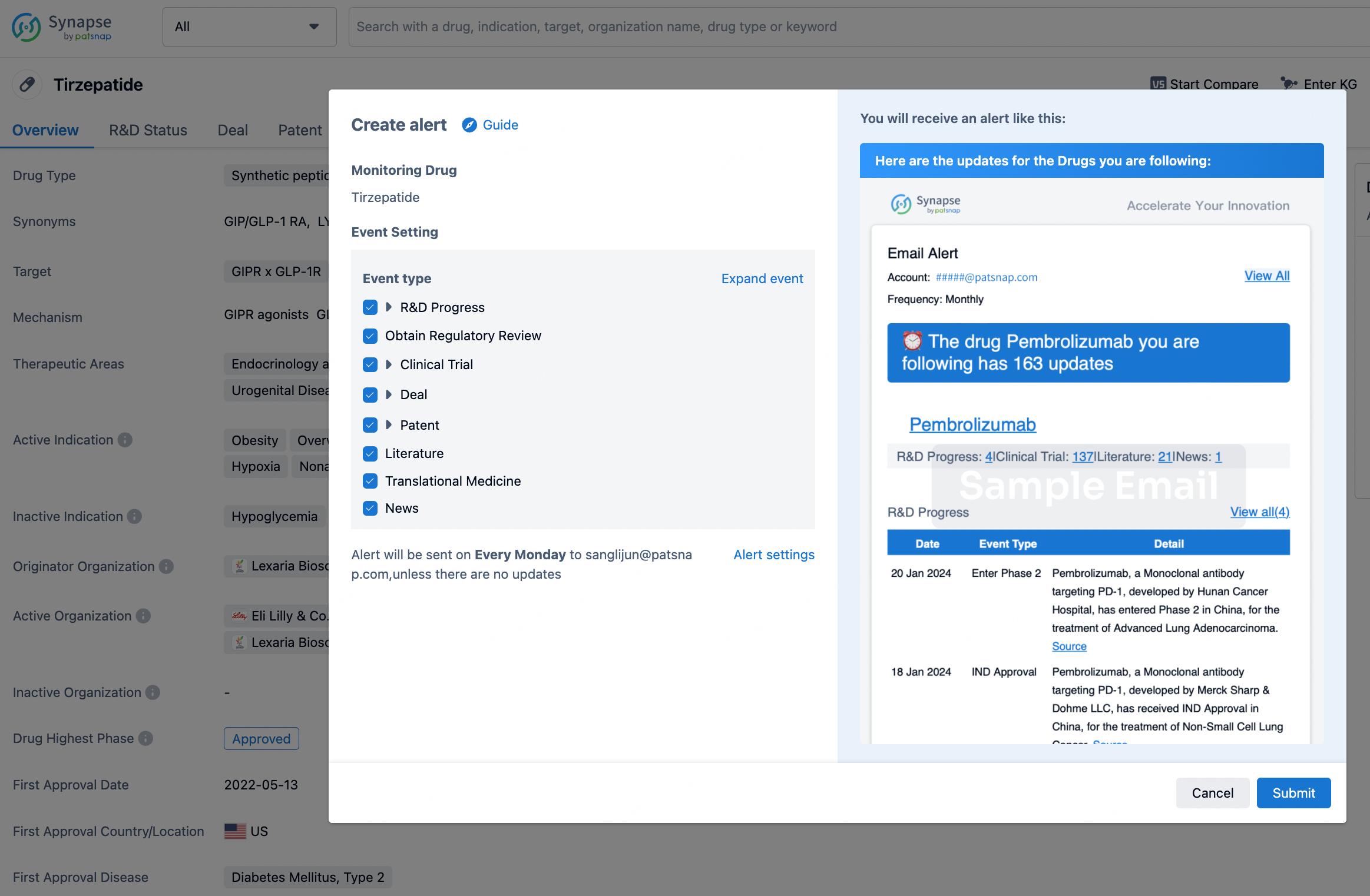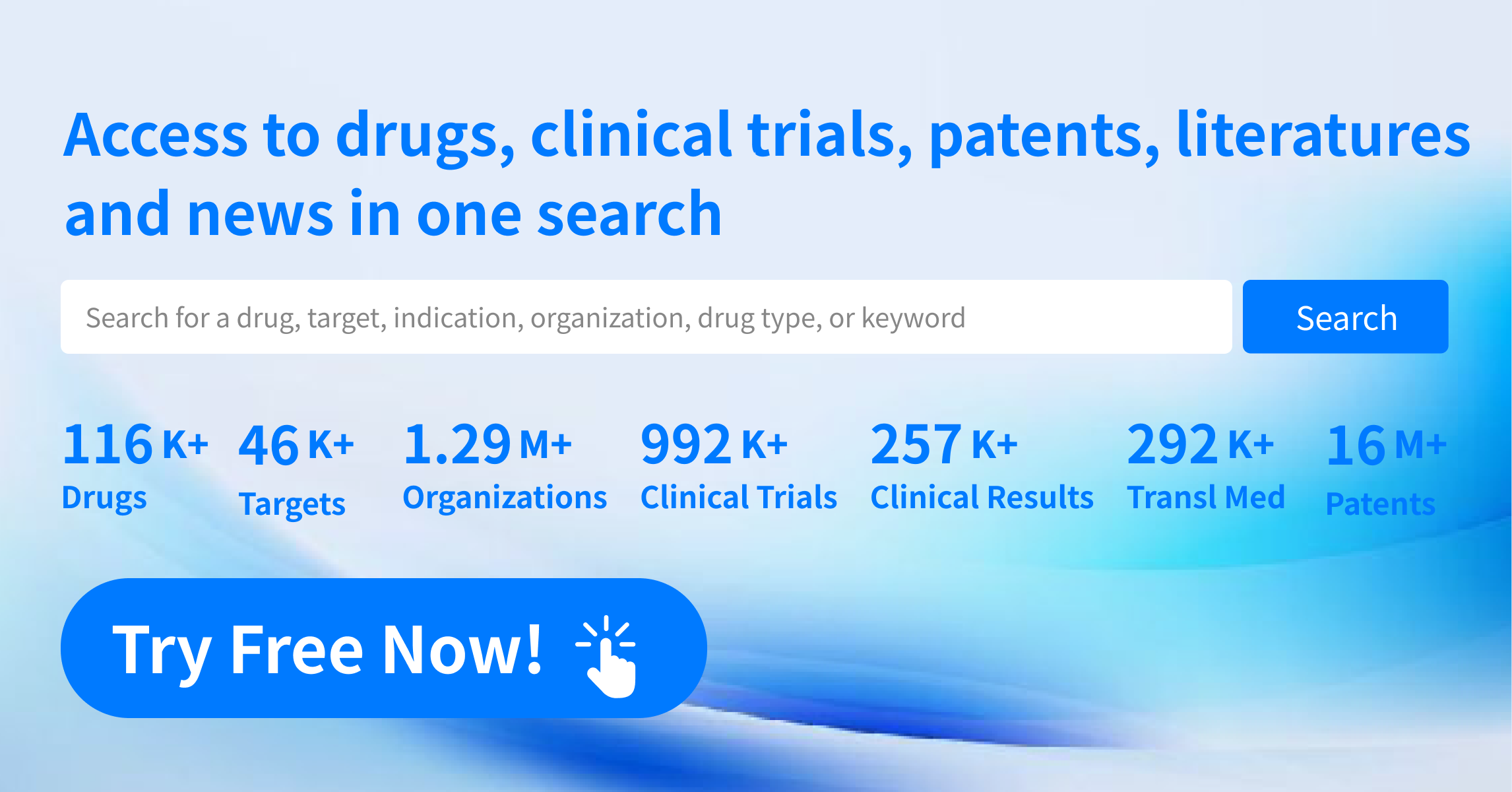Request Demo
What is Hirudoid used for?
15 June 2024
Hirudoid is a topical medication widely recognized under various trade names, including Hirudoid Cream, Hirudoid Gel, and Hirudoid Forte. The primary target of this medication is to manage and alleviate conditions associated with inflammation and thrombosis in the veins. Hirudoid is particularly effective in treating superficial thrombophlebitis, which involves the formation of blood clots and inflammation in veins located just beneath the skin surface. This drug has also found utility in addressing bruising, including post-surgical bruising, and other conditions characterized by swelling and inflammation.
Marketed primarily in Europe and Asia, Hirudoid is the brainchild of research conducted by several pharmaceutical institutions focused on developing non-invasive treatments for venous disorders. The active ingredient in Hirudoid is heparinoid, which belongs to a class of drugs known as glycosaminoglycans. These compounds share similarities with heparin, a well-known anticoagulant, but are designed for topical application. Over the years, Hirudoid has undergone extensive clinical trials and research, establishing its efficacy and safety profile. Although it is not as well-known in the United States, its global recognition continues to grow, fueled by its effectiveness in managing a range of dermatological and vascular conditions.
Hirudoid functions through a well-documented mechanism of action primarily involving its active ingredient, heparinoid. Heparinoid is a mucopolysaccharide polysulfate with properties akin to those of heparin, albeit it is intended for topical rather than systemic use. Upon application, heparinoid penetrates the skin and exerts several pharmacological effects.
Firstly, heparinoid has anti-inflammatory properties that help reduce swelling and redness associated with various skin conditions and superficial venous disorders. It inhibits the activity of inflammatory mediators, which are substances produced by the immune system that contribute to inflammation.
Secondly, heparinoid exhibits anticoagulant properties, preventing the formation of blood clots within the superficial veins. This is particularly beneficial in conditions like superficial thrombophlebitis, where blood clots and inflammation coexist. By inhibiting clot formation, Hirudoid aids in reducing the risk of further vascular complications.
Thirdly, Hirudoid enhances microcirculation. Improved blood flow in the capillaries and small veins facilitates the removal of excess fluid and inflammatory substances, thereby reducing swelling and promoting the healing process. This aspect of Hirudoid’s action is particularly beneficial in treating bruises and hematomas, as it accelerates the resorption of blood that has leaked into the tissues.
Administering Hirudoid is straightforward, making it a user-friendly option for both patients and healthcare providers. Hirudoid is available in various forms, including a cream and a gel, each designed for external application.
To use Hirudoid, one should apply a thin layer of the cream or gel to the affected area. It is recommended to gently massage the medication into the skin until it is fully absorbed. Depending on the severity and nature of the condition, Hirudoid can be applied up to four times daily. It is essential to follow the dosage and frequency instructions provided by a healthcare professional or the product’s packaging to achieve optimal results.
The onset time for Hirudoid’s therapeutic effects can vary based on the condition being treated and the individual patient’s response. Generally, patients may begin to notice a reduction in swelling, bruising, and pain within a few days of consistent use. For more acute conditions like superficial thrombophlebitis, it may take a week or two to observe significant improvements.
Hirudoid’s side effects are relatively rare, especially when compared to systemic medications, but they can occur. The most common side effects are local reactions at the site of application, which may include redness, itching, or mild irritation. These reactions are typically mild and transient, resolving on their own without the need for medical intervention.
However, there are specific contraindications for Hirudoid use. Individuals who have a known hypersensitivity or allergy to heparinoid or any other components of the formulation should avoid using this medication. Additionally, Hirudoid should not be applied to broken or infected skin, as this can exacerbate the condition and increase the risk of systemic absorption, leading to unwanted side effects.
Although Hirudoid is generally safe for most individuals, certain situations warrant caution. Pregnant and breastfeeding women should consult their healthcare provider before using Hirudoid to ensure it is appropriate for their condition. Moreover, individuals with bleeding disorders or those taking anticoagulant medications should use Hirudoid under medical supervision, as there is a theoretical risk of exacerbating bleeding tendencies.
While Hirudoid is effective on its own, it is crucial to consider potential drug interactions when using this medication. One of the primary concerns is the concomitant use of other topical medications. When multiple topical agents are applied to the same area, there is a risk of altered absorption and efficacy. Therefore, it is advisable to space out the application times of different topical treatments to avoid such interactions.
Systemic medications that affect blood clotting can also interact with Hirudoid. For instance, patients taking oral anticoagulants like warfarin or antiplatelet drugs such as aspirin should use Hirudoid with caution. Although the risk of systemic absorption of heparinoid from topical application is minimal, there is still a potential for increased anticoagulant effects, leading to an elevated risk of bleeding. Therefore, it is essential to discuss all current medications with a healthcare provider before starting Hirudoid.
In summary, Hirudoid is a valuable topical medication with a well-established role in managing various inflammatory and thrombotic conditions of the superficial veins. Its active ingredient, heparinoid, exerts anti-inflammatory, anticoagulant, and microcirculatory-enhancing effects, making it a versatile treatment option. Proper application and adherence to dosage instructions can lead to significant improvements in conditions like superficial thrombophlebitis and bruising. While the side effects of Hirudoid are generally mild, it is crucial to be aware of contraindications and potential drug interactions to ensure safe and effective use. As research and clinical experience with Hirudoid continue to grow, its role in dermatological and vascular therapy is likely to expand, offering relief to many patients worldwide.
Marketed primarily in Europe and Asia, Hirudoid is the brainchild of research conducted by several pharmaceutical institutions focused on developing non-invasive treatments for venous disorders. The active ingredient in Hirudoid is heparinoid, which belongs to a class of drugs known as glycosaminoglycans. These compounds share similarities with heparin, a well-known anticoagulant, but are designed for topical application. Over the years, Hirudoid has undergone extensive clinical trials and research, establishing its efficacy and safety profile. Although it is not as well-known in the United States, its global recognition continues to grow, fueled by its effectiveness in managing a range of dermatological and vascular conditions.
Hirudoid functions through a well-documented mechanism of action primarily involving its active ingredient, heparinoid. Heparinoid is a mucopolysaccharide polysulfate with properties akin to those of heparin, albeit it is intended for topical rather than systemic use. Upon application, heparinoid penetrates the skin and exerts several pharmacological effects.
Firstly, heparinoid has anti-inflammatory properties that help reduce swelling and redness associated with various skin conditions and superficial venous disorders. It inhibits the activity of inflammatory mediators, which are substances produced by the immune system that contribute to inflammation.
Secondly, heparinoid exhibits anticoagulant properties, preventing the formation of blood clots within the superficial veins. This is particularly beneficial in conditions like superficial thrombophlebitis, where blood clots and inflammation coexist. By inhibiting clot formation, Hirudoid aids in reducing the risk of further vascular complications.
Thirdly, Hirudoid enhances microcirculation. Improved blood flow in the capillaries and small veins facilitates the removal of excess fluid and inflammatory substances, thereby reducing swelling and promoting the healing process. This aspect of Hirudoid’s action is particularly beneficial in treating bruises and hematomas, as it accelerates the resorption of blood that has leaked into the tissues.
Administering Hirudoid is straightforward, making it a user-friendly option for both patients and healthcare providers. Hirudoid is available in various forms, including a cream and a gel, each designed for external application.
To use Hirudoid, one should apply a thin layer of the cream or gel to the affected area. It is recommended to gently massage the medication into the skin until it is fully absorbed. Depending on the severity and nature of the condition, Hirudoid can be applied up to four times daily. It is essential to follow the dosage and frequency instructions provided by a healthcare professional or the product’s packaging to achieve optimal results.
The onset time for Hirudoid’s therapeutic effects can vary based on the condition being treated and the individual patient’s response. Generally, patients may begin to notice a reduction in swelling, bruising, and pain within a few days of consistent use. For more acute conditions like superficial thrombophlebitis, it may take a week or two to observe significant improvements.
Hirudoid’s side effects are relatively rare, especially when compared to systemic medications, but they can occur. The most common side effects are local reactions at the site of application, which may include redness, itching, or mild irritation. These reactions are typically mild and transient, resolving on their own without the need for medical intervention.
However, there are specific contraindications for Hirudoid use. Individuals who have a known hypersensitivity or allergy to heparinoid or any other components of the formulation should avoid using this medication. Additionally, Hirudoid should not be applied to broken or infected skin, as this can exacerbate the condition and increase the risk of systemic absorption, leading to unwanted side effects.
Although Hirudoid is generally safe for most individuals, certain situations warrant caution. Pregnant and breastfeeding women should consult their healthcare provider before using Hirudoid to ensure it is appropriate for their condition. Moreover, individuals with bleeding disorders or those taking anticoagulant medications should use Hirudoid under medical supervision, as there is a theoretical risk of exacerbating bleeding tendencies.
While Hirudoid is effective on its own, it is crucial to consider potential drug interactions when using this medication. One of the primary concerns is the concomitant use of other topical medications. When multiple topical agents are applied to the same area, there is a risk of altered absorption and efficacy. Therefore, it is advisable to space out the application times of different topical treatments to avoid such interactions.
Systemic medications that affect blood clotting can also interact with Hirudoid. For instance, patients taking oral anticoagulants like warfarin or antiplatelet drugs such as aspirin should use Hirudoid with caution. Although the risk of systemic absorption of heparinoid from topical application is minimal, there is still a potential for increased anticoagulant effects, leading to an elevated risk of bleeding. Therefore, it is essential to discuss all current medications with a healthcare provider before starting Hirudoid.
In summary, Hirudoid is a valuable topical medication with a well-established role in managing various inflammatory and thrombotic conditions of the superficial veins. Its active ingredient, heparinoid, exerts anti-inflammatory, anticoagulant, and microcirculatory-enhancing effects, making it a versatile treatment option. Proper application and adherence to dosage instructions can lead to significant improvements in conditions like superficial thrombophlebitis and bruising. While the side effects of Hirudoid are generally mild, it is crucial to be aware of contraindications and potential drug interactions to ensure safe and effective use. As research and clinical experience with Hirudoid continue to grow, its role in dermatological and vascular therapy is likely to expand, offering relief to many patients worldwide.
How to obtain the latest development progress of all drugs?
In the Synapse database, you can stay updated on the latest research and development advances of all drugs. This service is accessible anytime and anywhere, with updates available daily or weekly. Use the "Set Alert" function to stay informed. Click on the image below to embark on a brand new journey of drug discovery!
AI Agents Built for Biopharma Breakthroughs
Accelerate discovery. Empower decisions. Transform outcomes.
Get started for free today!
Accelerate Strategic R&D decision making with Synapse, PatSnap’s AI-powered Connected Innovation Intelligence Platform Built for Life Sciences Professionals.
Start your data trial now!
Synapse data is also accessible to external entities via APIs or data packages. Empower better decisions with the latest in pharmaceutical intelligence.


